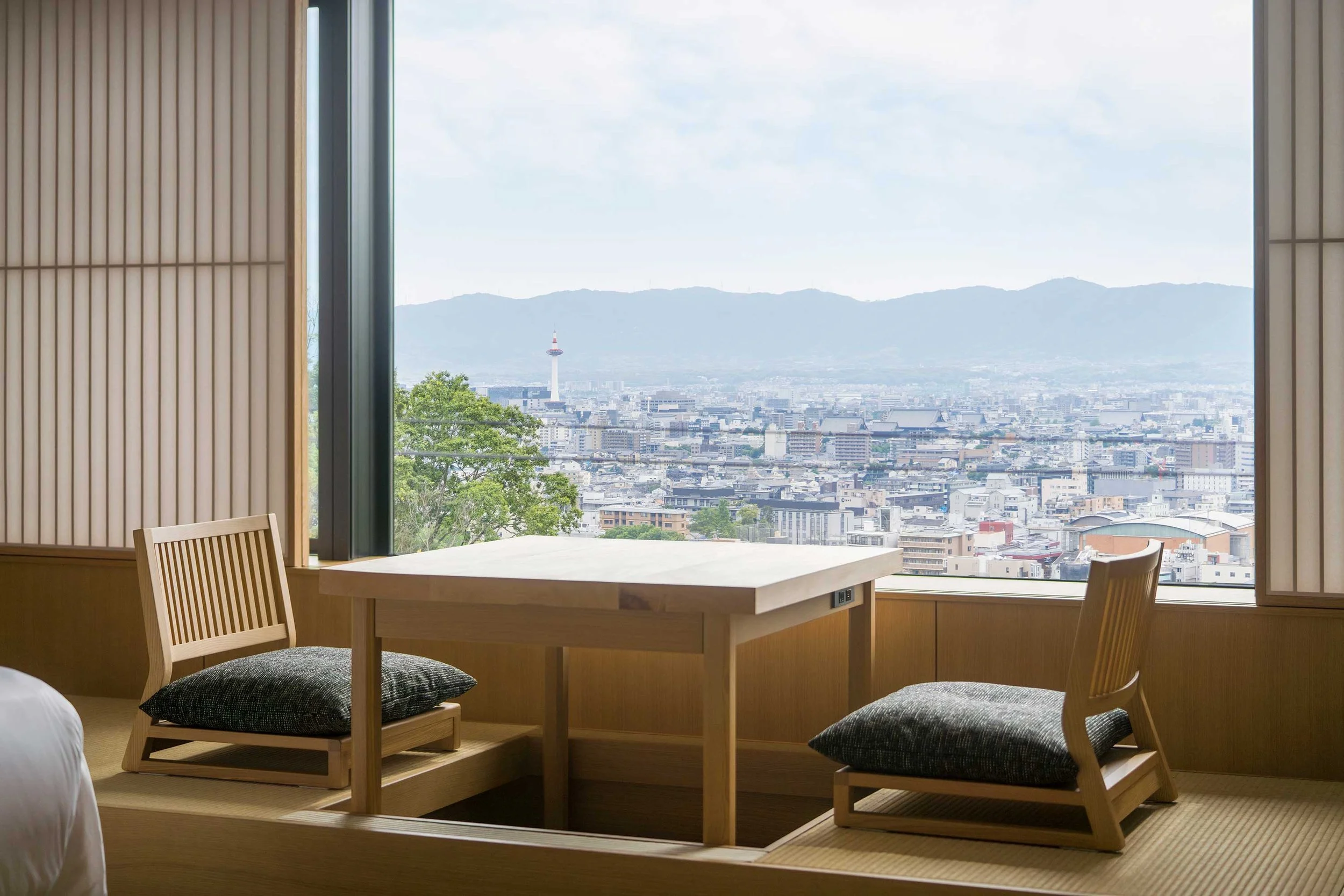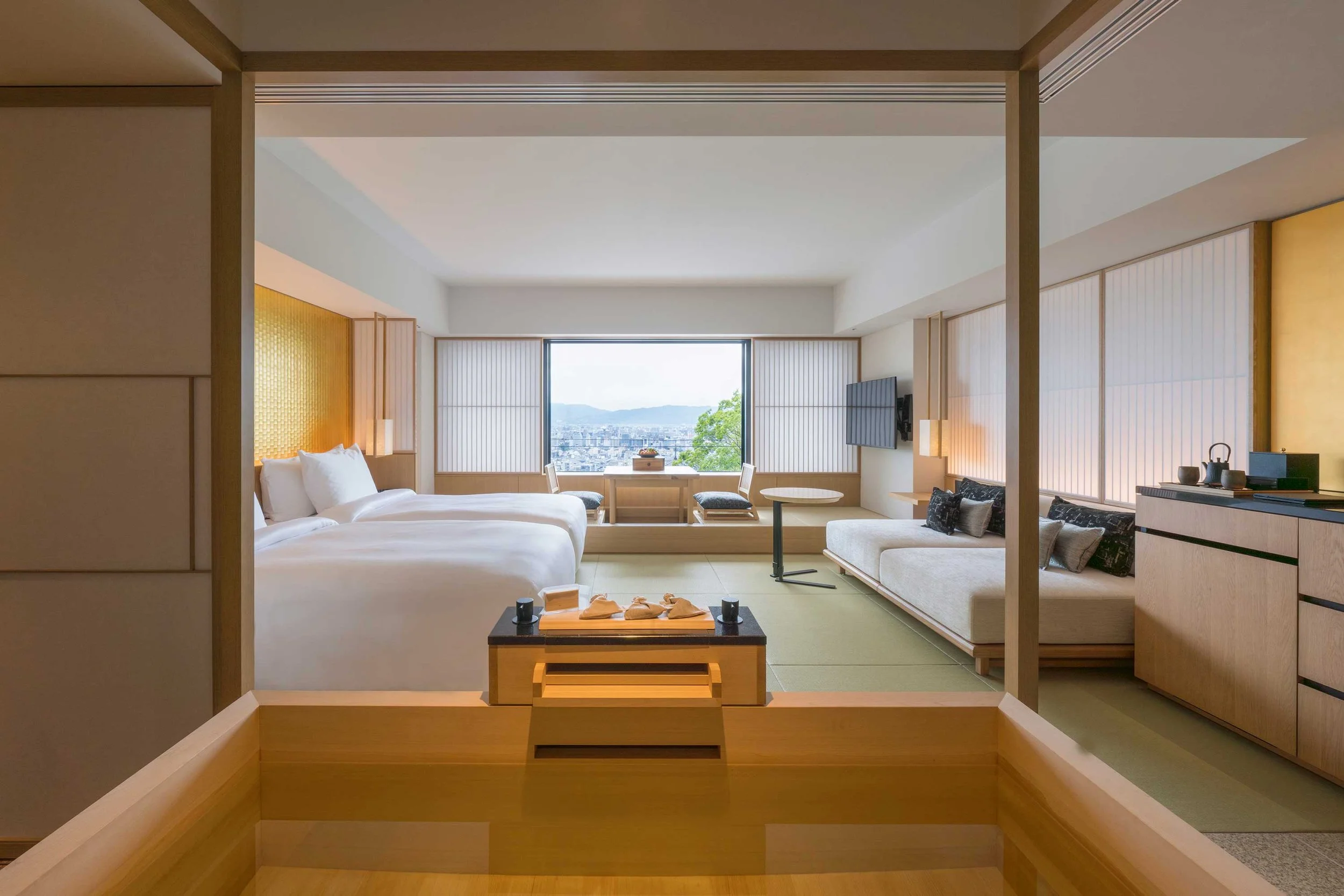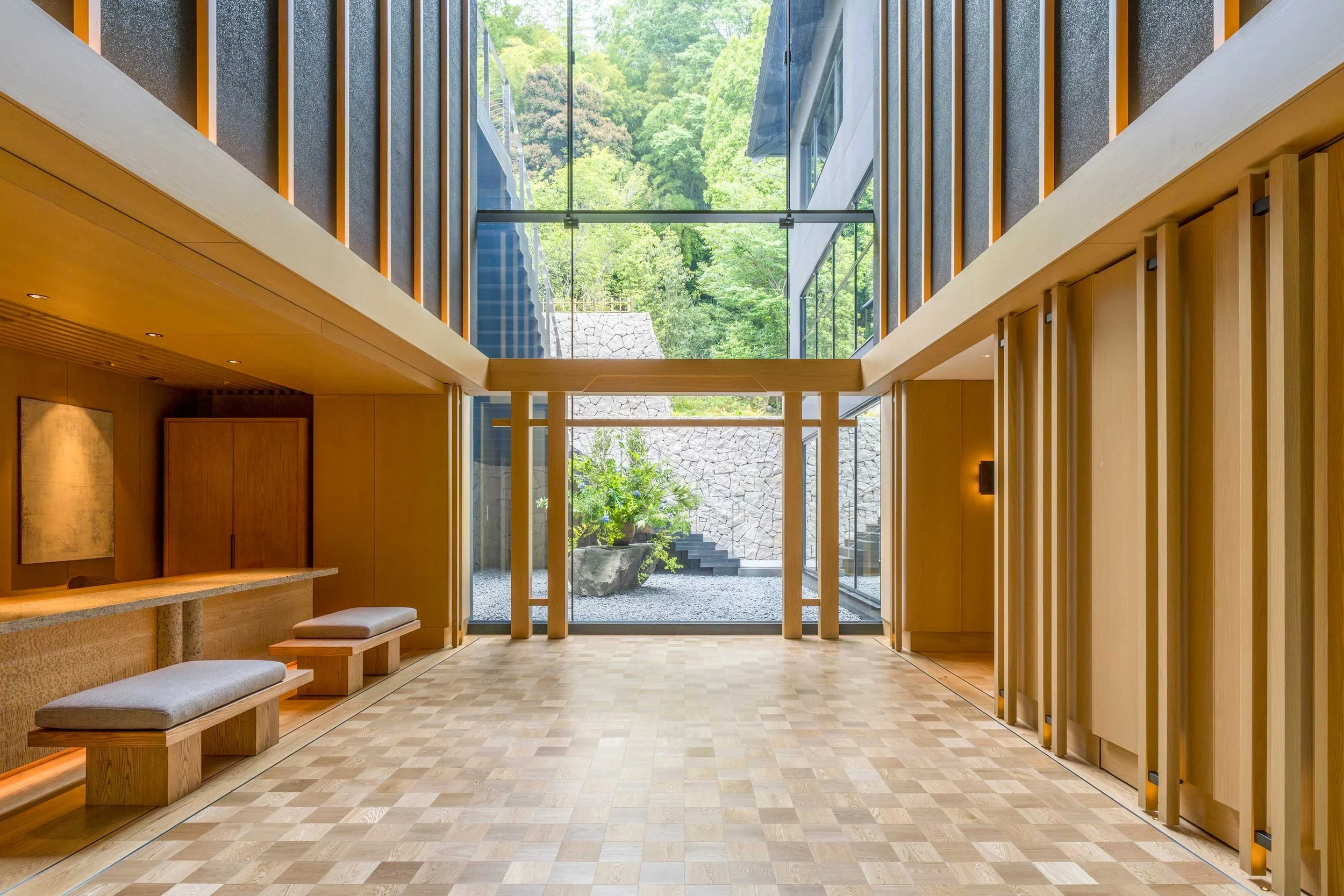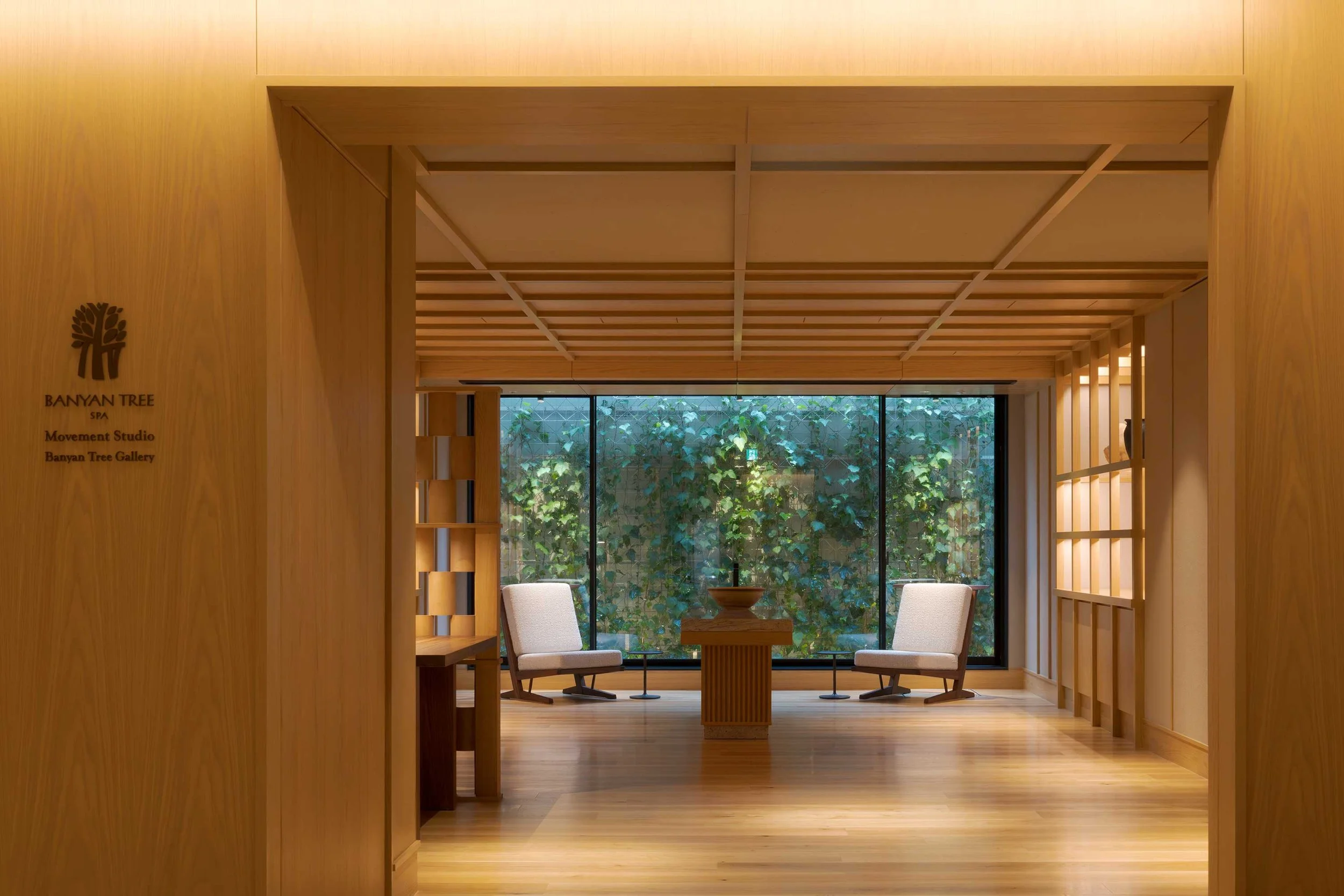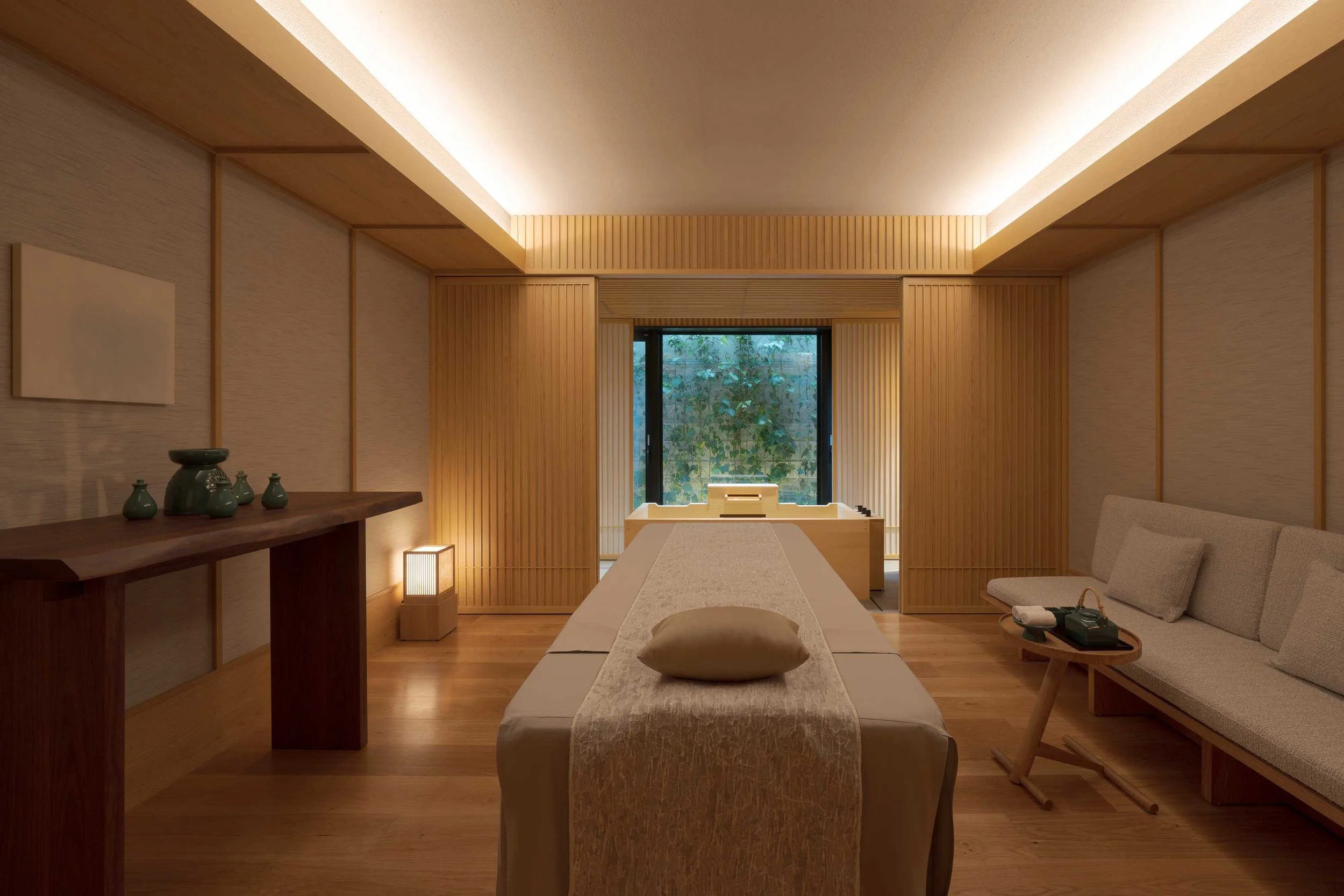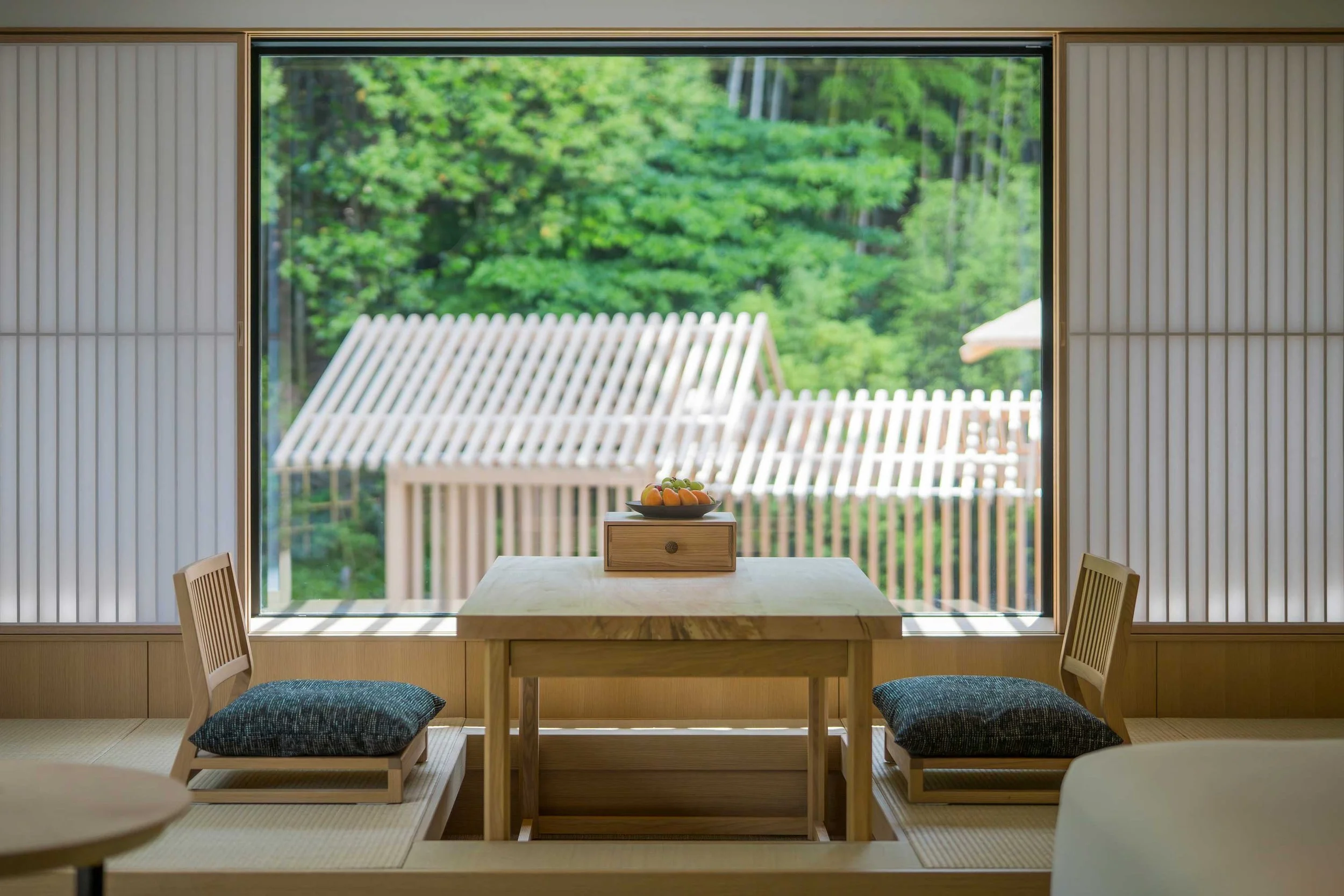Inside Banyan Tree’s First Japan Hotel, Perched atop Kyoto’s Higashiyama Neighbourhood
With architecture by Kengo Kuma, Kyoto’s newest luxury hotel delivers the studio’s signature use of wood alongside traditional Japanese interiors and a nod to the site’s origins as a ryokan
Nestled into the edge of the mountain that borders the city’s Higashiyama district, Banyan Tree Higashiyama Kyoto is more akin to a traditional Japanese ryokan than yet another luxury opening from a multinational hotel group. This is no coincidence: the Singapore-listed group’s first Japan opening has seen it work with a cast of Japanese architects, designers, artists and craftspeople.
Neighbouring Kiyomizu-dera temple, Banyan Tree’s sense of connection to its surrounds is evident throughout, with the 52-room property taking guests on a sensory excursion beyond the tourist-thronged streets of Higashiyama up into a bamboo-encased retreat. Complete with a natural onsen pumped from the hillside earth above, as well as eight rooms with their own private onsens, the location is an apt choice for the property, sitting on a piece of land that was previously home to a traditional ryokan. Parts of that property, including a rock wall at the entrance, have been preserved, as well as the bamboo forest at the hotel’s rear.
Like other new developments in Higashiyama, the structure has been integrated visually with the traditional Kyoto vernacular by using roof tiles that are typical of buildings in the area; something, in fact, mandated by the city’s government. With the original property smaller and surrounded by gardens, some of the latter were cleared and in their place, two structures — a main building and a south annex — were erected. The preserved original gardens now combine with new landscaping by Ibaraki Shunsoen, designed by Tokyo-based Placemedia to envelop the new structures.
The guest’s emergence into the lobby — designed by DWP International — is marked by a relaxed, sofa-side check-in. Laid out in a series of four distinct lounge areas, the interiors are marked by blond wood tones, neutral fabrics, warm lighting and rich charcoal accents. Residential in style, the hushed lobby lounge feels ageless and is fitted with bespoke furniture by Kagawa-based woodwork producer Sakura Seisakusho. Marble plinths, adorned with oversized washi-wrapped lanterns, divide the seating areas, while staff tend to guests with an arrival ritual that includes freshly whisked matcha.
The rich, woody fragrance of hiba — a cypress similar to hinoki — fills the guestrooms, which are focused around generously proportioned wooden bathtubs. Designed by Tokyo-based Yukio Hashimoto, the guestrooms continue the sensory experience with sculpted gold-foiled wallpaper above the headboard, tatami flooring and an open wet room with stone flooring. Guestroom windows feature shoji shutters and a traditional tatami-lined sunken dining area with views of the grounds beyond or the city’s skyline below.
Breakfast is taken at Ryozen, with a view of a traditional Noh stage — the hotel is the only one in the city to offer such a feature — and the bamboo forest above. In keeping with the ryokan spirit, Ryozen also serves a kaiseki dinner, while its sibling bar is found a level below and specialises in Kyoto sake. Also designed by DWP International, the drinking and dining spaces are intimate and feature thoughtful details such as handmade screens between tables by renowned Fukui-based bamboo fence maker Takenosuke. Gym and spa facilities on the basement level offer much of the same materials and finishes as the guestrooms, albeit with a calming subterranean atmosphere.
Thanks to its position above Higashiyama, a relatively low room count and the surrounding bamboo forest, Banyan Tree Higashiyama Kyoto feels a tad more escapist than many of the city’s other luxury offerings, while remaining in close proximity to Kyoto’s heart and its culture that draws so many to this ancient metropolis.
Text by Jeremy Smart
Images courtesy of Banyan Tree Higashiyama Kyoto

